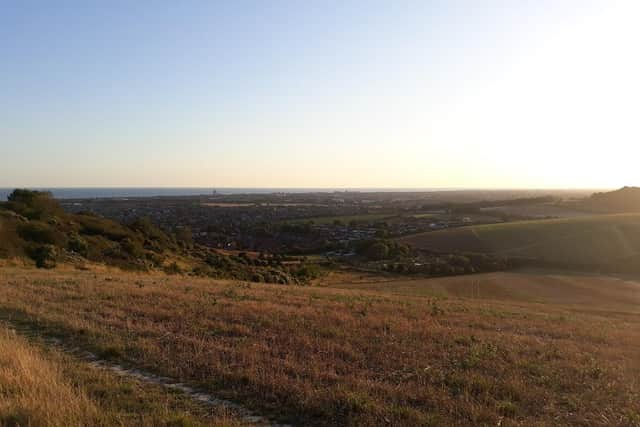Task force formed after deadly disease wipes out vast areas of woodland in Adur and Worthing
and live on Freeview channel 276
A plan to combat the loss of more than 1,200 ash trees, killed after succumbing to the deadly fungal disease ash dieback, is now in its initial phases at Lancing Ring with plans for an extensive replanting programme.
Adur and Worthing councils’ parks team has been carrying out an urgent study into the extent of the problem at Lancing Ring and The Gallops at Findon Valley in Worthing - areas particularly vulnerable because of the volume of ash trees.
Advertisement
Hide AdAdvertisement
Hide AdAlmost 20 per cent of the woodland is at risk from the disease, which is spreading across Europe.


The councils' arboricultural inspector has met with Friends of Lancing Ring to discuss where some of the infected and dead trees will be removed from the woodland, and where glades will be opened up, with new species of trees being planted and the potential for marginalised planting around the edges of the woodland.
Friends of Lancing Ring will be working with the councils to help clear the area, plant new trees and help maintain them, preserving the landscapes and work towards climate change mitigation.
Councillor Emma Evans, Adur District Council's cabinet member for the environment, said: “Across Europe and elsewhere in the UK we are seeing the vast majority of ash trees contracting the disease dying so, sadly, our plan really has to be about felling affected trees and replacing with other species.
Advertisement
Hide AdAdvertisement
Hide Ad“Swift action is needed in response to the threat to beautiful areas like Lancing Ring.
“Engaging with local schools and community groups as part of these replanting programmes is a vital step to try and create something special, new memories and legacies out of something so sad.”
The disease is currently incurable, which means the most common tree in West Sussex, ash, could disappear from the landscape forever.
The parks team are working closely with The Tree Council and West Sussex County Council and other local landowners to coordinate the approach to the affected areas.
Advertisement
Hide AdAdvertisement
Hide AdDefra and the Tree Council has created a tool to assist land managers in the effective and safe management of their tree stock and the disease, an approach formally adopted by Adur and Worthing Councils’ Joint Strategic Committee at a meeting on Tuesday (October 8).
Cllr Edward Crouch, Worthing Borough Council's cabinet member for digital and environment services, said: “We’re going to lose entire woodland areas, because the majority of trees are ash. It’s a difficult position to be in, but we have to protect our green spaces, which is why we are developing this replanting programme.
“Our environmental teams are exploring where we can futureproof by replanting a diverse range of new trees to help our landscape endure against aggressive diseases which target one species of tree.”
Symptoms of ash dieback include blackened and curling young leaf shoots, a very thin crown at the top of the tree resulting in an undernourished canopy of leaves and damage to bark.
Advertisement
Hide AdAdvertisement
Hide AdIt is spread through spores from tree to tree, blocking the water transport systems in ash trees. It was first spotted in Worthing in 2014 and identified in the Crematorium a year later.
A small percentage of older ash trees are insusceptible to the disease and it is hoped to breed from these in the future.